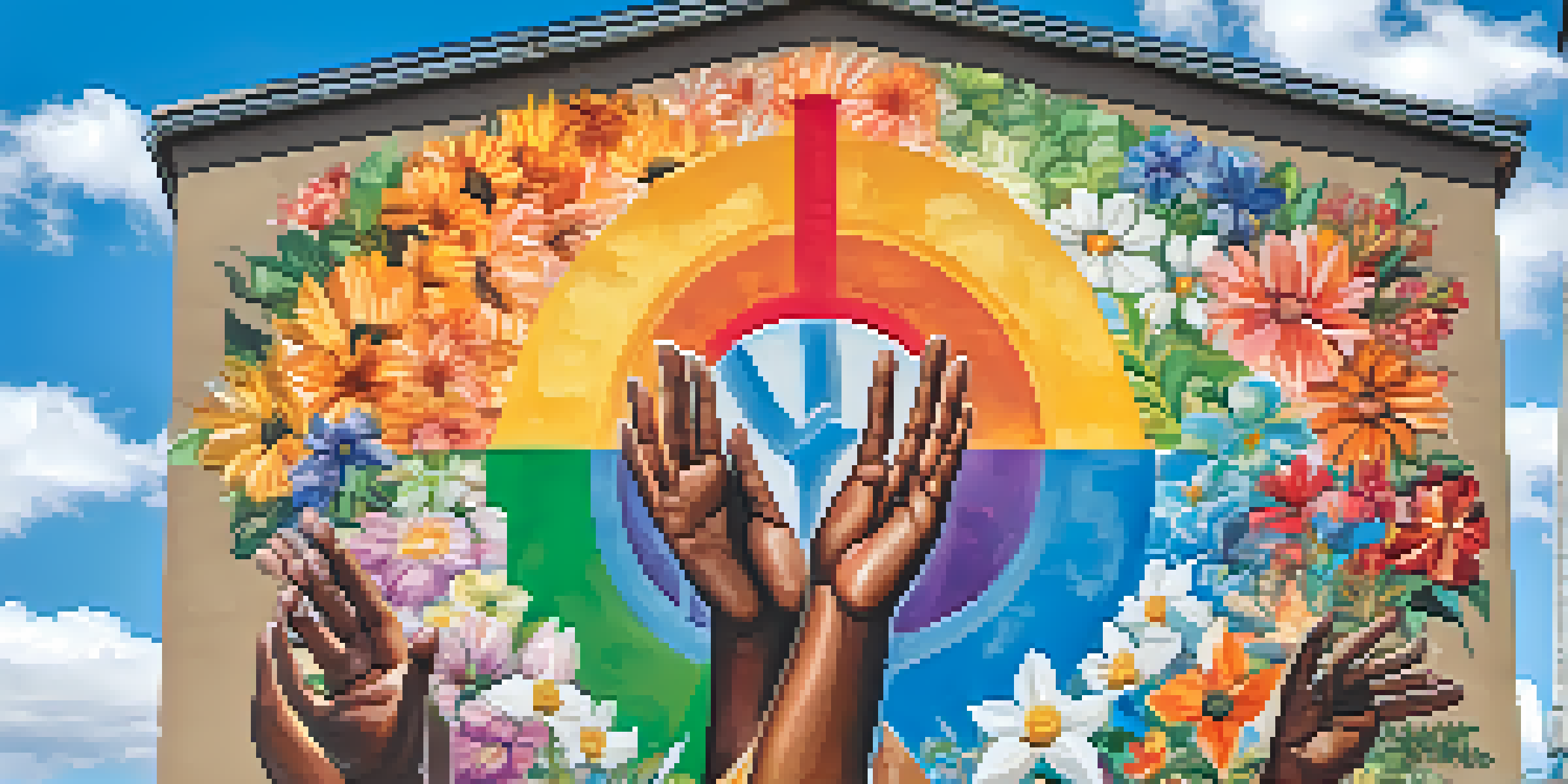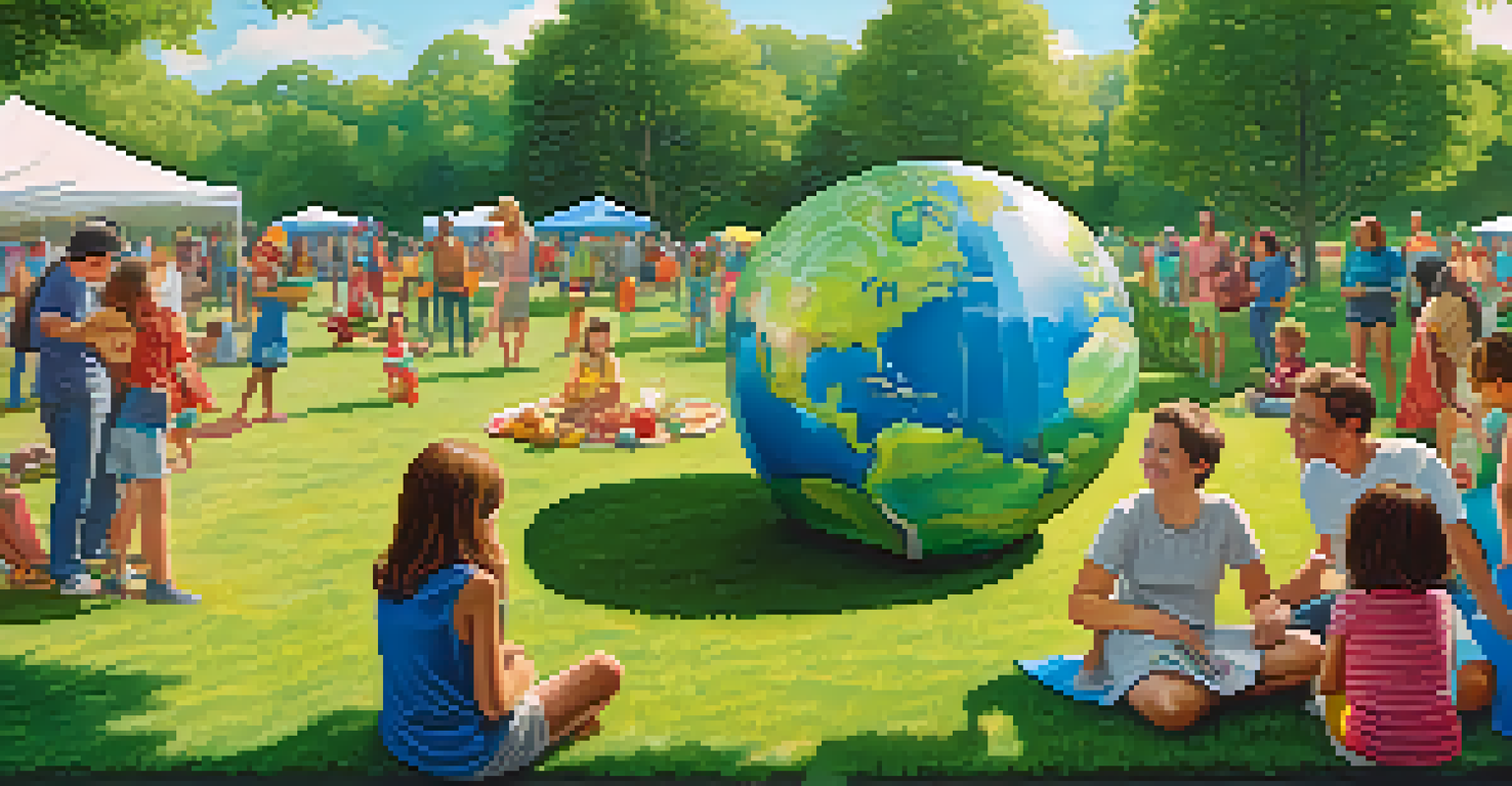The Intersection of Art and Activism in Modern Politics

Understanding the Role of Art in Social Movements
Art has always played a significant role in shaping social movements. From protest songs to striking visual art, creative expression can amplify voices that might otherwise go unheard. For instance, during the Civil Rights Movement, artists like Nina Simone used their music to highlight injustices, moving people to action.
Art should comfort the disturbed and disturb the comfortable.
In modern politics, this trend continues as artists leverage their platforms to address pressing issues such as climate change, racial inequality, and gender rights. Art becomes a rallying cry, inviting people to reflect and engage with complex societal challenges. By merging creativity with activism, artists create a unique space for dialogue and reflection.
Moreover, art allows for emotional resonance, often capturing the essence of struggles in ways that statistics and speeches cannot. This emotional connection can mobilize communities, inspiring collective action and fostering solidarity among diverse groups.
How Activism Shapes Artistic Expression
Just as art can influence activism, the reverse is also true—activism shapes artistic expression. Artists often draw inspiration from current events, using their work to comment on social and political issues. For example, street art has emerged as a powerful medium for protest, often found in urban spaces during movements like Black Lives Matter.

This dynamic relationship fosters a sense of urgency within the art world, encouraging artists to address contemporary issues head-on. Some might create stark visual pieces that confront viewers with uncomfortable truths, while others might craft more subtle works that encourage reflection and conversation.
Art as a Voice for Change
Art serves as a powerful medium to amplify marginalized voices and inspire collective action during social movements.
As artists respond to activism, they also create a feedback loop, where their work inspires further action. This synergy is evident in collaborative projects, where artists and activists join forces to create meaningful change, reinforcing the idea that art can be a catalyst for social transformation.
The Impact of Digital Platforms on Art and Activism
In our digital age, platforms like social media have revolutionized how art intersects with activism. With just a few clicks, artists can share their work with a global audience, raising awareness and sparking conversations around critical issues. This immediacy allows for rapid mobilization, as seen during protests and movements worldwide.
The role of the artist is to make the revolution irresistible.
Additionally, digital art forms such as memes and GIFs have emerged as modern tools of activism. These bite-sized pieces of content can spread like wildfire, making complex ideas accessible and relatable to a broader audience. By using humor or satire, artists can engage people who might otherwise disengage from serious topics.
However, this digital transformation also raises questions about authenticity and the potential for art to be commodified. As artists navigate these online spaces, they must balance the desire for visibility with staying true to their message and mission.
Case Studies: Art in Action During Recent Movements
Recent global movements have showcased the powerful intersection of art and activism. Take the Women's March, for example, where participants donned iconic pink hats and carried signs featuring clever slogans. These visual elements not only unified participants but also captured media attention, spreading the message far beyond the event itself.
Similarly, the climate strike movement has seen artists create compelling visuals that drive home the urgency of the crisis. Murals, installations, and performances have all been used to communicate the stakes of climate change, transforming public spaces into platforms for activism.
Activism Inspires Artistic Expression
Current events and social issues shape artistic creation, fostering a dynamic relationship that encourages urgent commentary.
These case studies demonstrate how art can be a vital form of resistance, uniting people around a common cause. By harnessing creativity, movements can inspire hope and action, proving that art and activism are indeed two sides of the same coin.
Collaborative Projects: Artists and Activists Unite
Collaboration between artists and activists has become increasingly common in recent years. Such partnerships leverage the unique skills of each party, resulting in projects that are both impactful and creatively rich. For instance, initiatives like 'The People's Climate March' brought together artists to create installations that visually represented the consequences of climate change, marrying art with advocacy.
These collaborative efforts often lead to innovative approaches that might not emerge from traditional activist strategies alone. Artists can help to articulate complex messages through visual storytelling, making them more digestible and engaging for the public. This fusion not only amplifies the activist’s message but also showcases the power of community.
Moreover, these projects can foster a sense of belonging and collective identity, essential elements in any successful movement. When artists and activists join forces, they create a vibrant tapestry of ideas and expressions that resonate deeply within society.
Challenges Faced by Artists in Political Activism
While many artists find fulfillment in merging their work with activism, it’s not without challenges. One significant hurdle is the risk of backlash or censorship from those who disagree with their message. Artists can face criticism, threats, or even legal repercussions, especially in politically charged environments.
Additionally, navigating funding and support can be tricky. Many artists rely on grants or sponsorships, which may come with strings attached that could compromise their artistic integrity. This dilemma can force artists to choose between financial stability and staying true to their convictions.
Digital Platforms Transform Activism
Social media and digital art have revolutionized activism, enabling rapid mobilization and broader engagement with critical issues.
Despite these obstacles, many artists continue to push boundaries, using their work to challenge the status quo. Their resilience highlights the importance of artistic expression in advocating for change, proving that creativity can thrive even in adversity.
The Future of Art and Activism in a Changing World
As we look ahead, the intersection of art and activism is likely to evolve. With shifting political landscapes and growing global interconnectedness, artists will continue to adapt their methods and messages. New technologies and platforms will likely play an even greater role in how art is disseminated and experienced.
Moreover, as younger generations take up the mantle of activism, we can expect to see fresh perspectives and innovative approaches to social issues. The rise of movements led by youth, such as Fridays for Future, highlights the importance of creativity in advocating for change, reminding us that art remains a powerful tool for social commentary.

Ultimately, the future of art and activism hinges on collaboration, resilience, and the unwavering belief that creativity can inspire change. As artists and activists continue to forge connections and amplify each other's voices, they will undeniably shape a more just and equitable world.